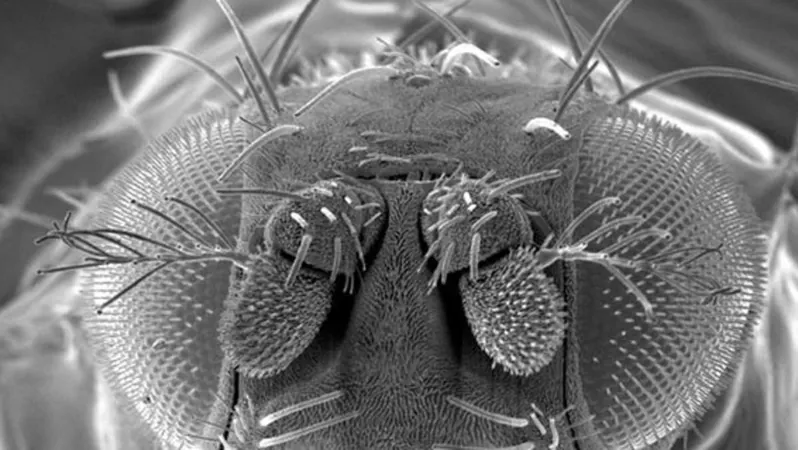
Revolutionary Breakthrough: Scientists Decode the Brain of a Fruit Fly!
2024-10-02
Author: Rajesh
Groundbreaking Achievement in Neurobiology
In a groundbreaking achievement for neurobiology, scientists have successfully mapped the entire brain of an adult fruit fly, known as Drosophila melanogaster. This impressive feat not only highlights the intricate workings of this tiny insect's neural architecture but also holds significant implications for understanding brain functions across various species, including humans.
Unveiling Neural Architecture and Connections
Unveiling a staggering 50 million connections among more than 139,000 neurons, the research dives deep into the complexities of neural wiring and the signals that govern healthy brain activity. The findings, published in a series of comprehensive studies in the prestigious journal *Nature*, represent a crucial step towards unraveling the mysteries of brain connectivity that could ultimately lead to mapping the brains of other organisms.
Expert Insights
Princeton University's Sebastian Seung, a leading figure in the research, emphasizes the broad relevance of this study: "You might be asking why we should care about the brain of a fruit fly. My simple answer is that if we can truly understand how any brain functions, it's bound to tell us something about all brains." This research opens doors to new insights that could enhance our grasp of both simple and complex neural systems.
Beauty in Complexity
Despite some people's tendencies to swat flies, researchers found beauty and fascination in their intricate neural structures. "It's beautiful," remarked University of Cambridge neuroscientist Gregory Jefferis, who co-led the project.
Detailed Wiring Diagram
This mapping effort resulted in a detailed wiring diagram, or "connectome," that presents a picture of the fruit fly's brain organization. While previous studies have focused on simpler organisms, such as the nematode worm and the larval stage of the fruit fly, this latest endeavor targets the more sophisticated brain of the adult fly, equipped with more complex behaviors.
Research Focus Areas
Key questions explored by the research include how the structure of the brain contributes to the behaviors exhibited by these insects. Princeton neuroscientist Mala Murthy, another co-leader of the study, pointed out the importance of flies as a model system in neuroscience: "Their brains solve many of the same problems we do," she said, highlighting their capabilities in walking, flying, learning, memory, and even social interactions.
Investigating Behavior-Related Circuits
Among the various studies conducted, some focused on the brain circuits involved in walking and identified the mechanisms through which flies stop moving. Others investigated the intricate taste networks and grooming circuits that dictate behaviors such as cleaning their antennae using their legs. Research also delved into the visual system, examining how fly eyes interpret motion and color, as well as connectivity within the brain that revealed a network of "hub neurons" thought to enhance the efficiency of information processing.
Collaborative Efforts
The research team's efforts were spearheaded by an international coalition known as the FlyWire Consortium. Their collaborative work not only advances our understanding of a fruit fly’s brain but also paves the way for deeper explorations into the neural correlates of behavior across the animal kingdom. As we continue to decode the complexities of the brain, who knows what other secrets the fruit fly might reveal? Stay tuned for more groundbreaking discoveries in the realm of neuroscience!



 Brasil (PT)
Brasil (PT)
 Canada (EN)
Canada (EN)
 Chile (ES)
Chile (ES)
 España (ES)
España (ES)
 France (FR)
France (FR)
 Hong Kong (EN)
Hong Kong (EN)
 Italia (IT)
Italia (IT)
 日本 (JA)
日本 (JA)
 Magyarország (HU)
Magyarország (HU)
 Norge (NO)
Norge (NO)
 Polska (PL)
Polska (PL)
 Schweiz (DE)
Schweiz (DE)
 Singapore (EN)
Singapore (EN)
 Sverige (SV)
Sverige (SV)
 Suomi (FI)
Suomi (FI)
 Türkiye (TR)
Türkiye (TR)